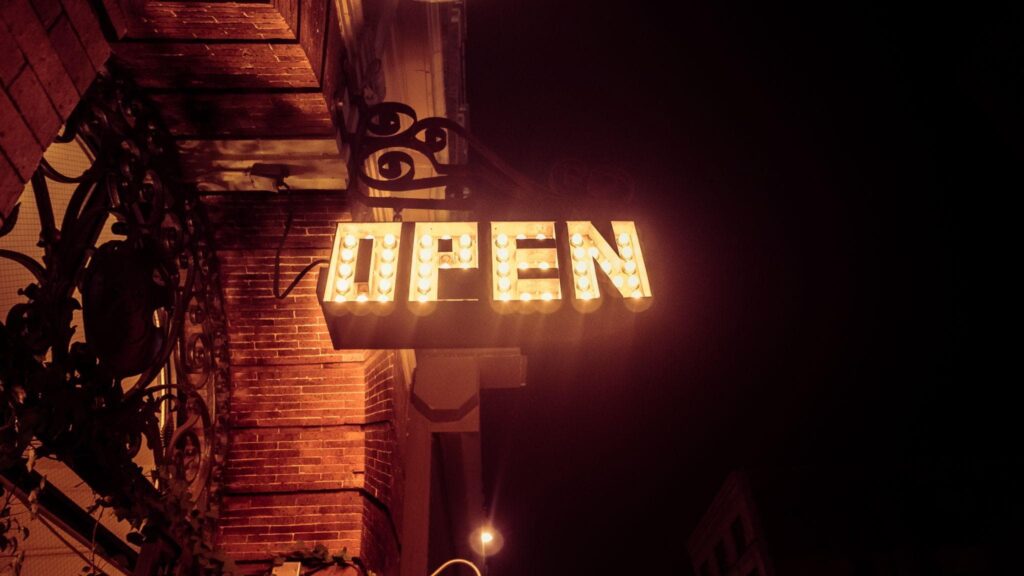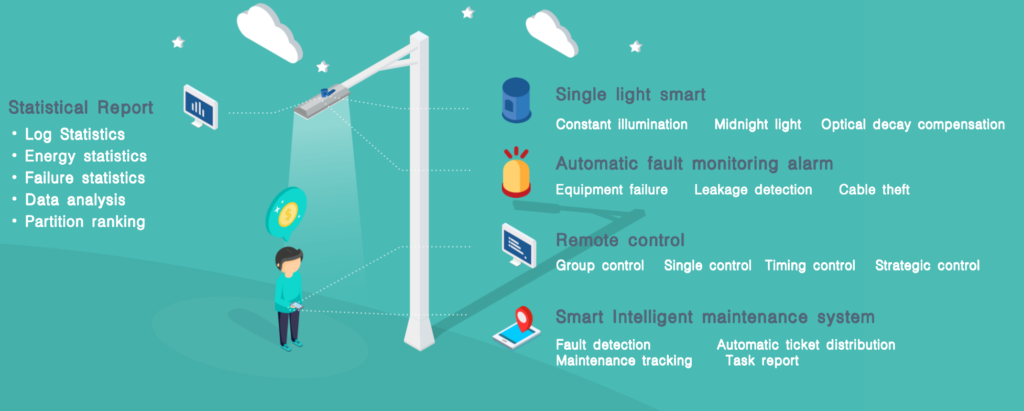Outline
- Introduction
- Why Do Advertising Lights Need Photocontrols?
- How Do Photosensors Work in Outdoor Advertising Lighting?
- Which Mounting Options Are Best for Different Advertising Structures?
- Where Are Lighting Control Used in Advertising Lighting Applications?
- Why Choose Long-Join Photocells for Billboard & Sign Lighting?
- How Can You Install a Photocell Quickly and Safely?
- How Can Smarter Photocontrols Future-Proof Your Advertising Lighting?
- Final Words
Your billboard lights stay on all night long. The results are hefty power bills. Manual switching is inconvenient and prone to error.
What if your lights turned on and off by themselves?
Light photocells make this possible. They detect ambient light and control power automatically. This saves energy, reduces maintenance, and ensures ads stay bright at night and off during the day.

Why Do Advertising Lights Need Photocontrols?
To Overcome Manual Switching
Without a photocell sensor, sign and billboard lighting often stays on during daylight. That wastes electricity and increases costs. Manual control is unreliable. Human error or oversight means lights may stay off at dusk or on at dawn.
Photocell switches use a photosensor to monitor ambient light. They automatically switch lights based on the Lux level. This automation ensures lights always come on at dusk and go off at dawn, without human input.
Guard Against Electric Surges
Surge protection is needed to protect against lightning or power spikes common in many outdoor locations. Photocells operate within a diverse voltage range. This shields your lighting system against such spikes.
Reduce Energy Consumption
Real-world data show photocell control can cut power use by 30%–40% in outdoor lighting systems by eliminating daytime operation. In other cases, pairing LED lighting + photocells yields energy savings of 50% to 90%, depending on usage patterns.
How Do Photosensors Work in Outdoor Advertising Lighting?
Keeping Ads Visible Only When Needed
A light sensor constantly measures ambient light. When light drops below a set level, it closes the circuit and powers the lights. When light rises above that level, it opens the circuit and turns the lights off. Here is a table discussing the common Lux threshold for advertising lighting.
| Application Type | Recommended ON Lux | Recommended OFF Lux | Purpose |
| Highway Billboards | 10 Lux | 30 Lux | Maximum night visibility |
| Urban LED Screens | 15 Lux | 35 Lux | Balances visibility and energy |
| Mall Lightboxes | 20 Lux | 50 Lux | Brighter switch-on for indoor contrast |
| Smart Signage (Dimmable) | 5–15 Lux | 20–30 Lux | Optimized for adaptive dimming |
Typical ON thresholds range from 10 to 16 Lux. OFF thresholds are higher, usually 30 to 80 Lux or more. This ensures ads turn on at dusk and stay lit until daylight is strong enough. The design also prevents flickering when light levels hover near the threshold.
Time-Delay Feature
Light sensor switches have an integrated feature of a time delay of 3 to 10 seconds or more. This stops nuisance switching caused by headlights or shadows. The delay also keeps circuits stable and prevents stress on lamps or LEDs.
Simplifying Power Circuit Design
A photoelectric sensor removes the need for external timers or manual switches. One photocell can run multiple fixtures if connected on the same circuit. Its relay acts as an automatic ON/OFF control. This keeps the control panel design simple and efficient.
Which Mounting Options Are Best for Different Advertising Structures?

Wire-in Photo Switch Sensor for Billboard Systems
Use a wire-in light photocell sensor when you need flexible placement or have non-standard mounting points. They connect directly to the power circuit. These are ideal for large static billboards where lamp housings are accessible.
Wire-in models often support high-wattage loads as seen in Long-Join’s JL-103 series. Here is a table further outlining the technical specifications of JL-103.
| Parameter | Spec | Parameter | Spec |
| Rated Voltage Options | 120 VAC; 220-240 VAC; 208-277 VAC; 277 VAC; 347 VAC; 480 VAC (depending on variant) | On / Off Lux Operate Levels | ~10-20 Lux ON; ~30-60 Lux OFF |
| Rated Loading | Varies by model: e.g., JL-103A → 500 W / 850 VA; higher models up to 2000 W / 2000 VA | IP Rating | IP54 (JL-103A) standard; optional IP65 or higher in certain versions / with rain cap |
| Power Consumption (No-Load) | ~1.5 W Max for many models | Ambient Temperature | −40 °C ~ +70 °C |
| Related Humidity | Up to ~96% RH |
Twist-lock Photo Control for Large-Scale Installations
Twist-lock or NEMA socket photocells are made for rapid replacement and low downtime. They are standard in street lighting, parking lots, and modular signage systems. Users just unplug the old cell and twist in the new one without rewiring.
Miniature or Embedded Photocells for Premium Signage
Embedded or miniature photocells are small and can be hidden in slim frames, backlit displays, or ultra-thin lightboxes. They preserve the design and avoid visible protrusions.
Long-Join’s Zhaga-interface mini heads (JL-700Z, etc.) are made for this. They maintain a uniform external appearance while still giving dusk-to-dawn control. Here is a table further outlining the technical specifications of JL-700Z.
| Parameter | Spec | Parameter | Spec |
| Rated Voltage Range | 100-277 VAC (nominal); Maximum 85-305 VAC | Related Humidity | 96% RH |
| IP Rating | IP66 (with base & dome) | Maximum Steady-State Input AC Current | ~30 mA @ 220 VAC |
| Operating Temperature | −40 °C to +70 °C | Body Dimensions | Ø30 × 29.4 mm |
| Protection Cap Dimensions | Ø45.2 × 10.8 mm | Body Material | PBT; Gasket: PBT + phenolic; Lock Nut: Zinc alloy |
| Output / Interface Options | Supports DALI-2.0 / 0-10 V dimming (optional) | Wire / Conductor Spec | AWM1015, AWG 18/20/22 (105 °C for certain wires) |
Recommended IP Ratings for Various Outdoor Environments
- Harsh outdoor exposure, IP66 or higher, is preferred.
- Coastal or salt spray environments, IP67 or better, to guard against moisture ingress and corrosion.
- For urban signage exposed to splash and debris, IP65 is the minimum.
- Enclosed or shielded signs with less exposure can use IP54 or IP55, but protection drops significantly.
Where Are Lighting Control Used in Advertising Lighting Applications?
Highway Billboards & Large LED Signs
Billboards need rugged photocells rated for 120–277 VAC or higher. Twist-lock/NEMA models are common for quick replacement and high load handling. Long-Join 7-pin and NB-IoT versions include surge protection and IP65–IP66 housings, ideal for harsh weather and continuous outdoor exposure.
Mall Lightboxes & Compact Photocells
Mall lightboxes benefit from small, hidden sensors that keep frames clean. Miniature or embedded photocells integrate with driver circuits for automatic dusk-to-dawn control. Long-Join slim designs and Zhaga interfaces maintain aesthetics while still delivering reliable switching in semi-indoor or covered environments.
Smart LoRa/NB-IoT Photocells
Smart controllers are used where centralized monitoring is required. LoRa/NB-IoT photocells provide live status updates, remote firmware control, and dimming profiles. These cut labor costs by reducing site visits and ensuring uptime for billboards, smart city ads, and connected outdoor signage networks.
ROI Improvements from Photocontrol Systems
- In a Lamar Advertising case, switching to smart controllers saved 26% on monthly utility bills.
- The payback period (ROI) in that case was 23 months.
- Cumulative savings for Lamar exceeded US$600,000 over the years after installing automated lighting controllers.
- Using IoT-enabled photocontrols further reduces maintenance costs by allowing faster detection of lamp failure, status monitoring, and eliminating unnecessary manual inspections.
Why Choose Long-Join Photocells for Billboard & Sign Lighting?

Accuracy & Reliability
Long-Join photocells use precision photosensors with narrow lux tolerances for consistent dusk-to-dawn switching. Here are some primary features:
- Adjustable 3–20 second delay prevents false triggers
- Their housings endure −40 °C to +70 °C, keeping performance stable
Surge Protection & Safety
Models like JL-205C include MOV surge arresters to absorb voltage spikes. This protects relays and electronics from lightning or grid transients. Fail-safe design keeps lights ON during sensor failure, preventing billboard blackouts and avoiding revenue loss for advertisers. Maintenance frequency is greatly reduced.
Voltage & Socket Compatibility
Long-Join offers universal-voltage models (120–277 VAC) for cross-region deployment. Fewer variants reduce stocking needs and streamline global rollouts. Further, they also support ANSI C136.10 and Zhaga sockets. This ensures seamless integration with existing luminaires and controls.
Customization Options
Lux thresholds & Delay settings
Models like JL-205/207/424 allow customizing ON/OFF lux levels and delay time to fit local dusk/dawn behavior or reduce flicker.
Housing and IP rating
OEMs can request:
- Different IP ratings
- Different materials, and
- Customized housing colors
Logos, finishes, and branding
Long-Join offers custom printed housings, matched sockets and covers, and branding on receptacles.
Connector/socket types & smart integration
OEMs can get twist-lock, Zhaga book-standard, NEMA 3-pin, 7-pin, or other configurations; also an option for smart photocontrol units with LoRa, NB-IoT, dimming, or remote monitoring.
How Can You Install a Photocell Quickly and Safely?
Wiring a Photocell
- Turn the breaker off.
- Verify the voltage supply matches the photocell.
- Follow the wiring diagram. Hot line to photocell’s hot lead; load lead to fixture; neutral/common leads joined correctly.
- Use the proper wiring color codes or leads (black/red/white/yellow, depending on the unit).
Sensor Positioning to Avoid False Triggering
- Mount the photocell so that no artificial or reflected light falls on its sensor window.
- Orient the unit so that wires exit downward; include a drip loop in wiring to prevent water ingress.
- If using models with swivels or adjustable heads (e.g., JL-118 with swivel), adjust direction so that ambient natural light, not lamp glare or reflected surfaces, hits the sensor.
Testing the ON/OFF Function After Installation
- To confirm correct wiring and that the sensor reacts to actual ambient conditions.
- Because initial behavior might differ: many photocells take a minute or two to turn off when first powered (when tested in daylight).
- Testing simulates real dusk/dawn: cover the sensor to see ON; uncover to test OFF. Ensures the unit works as expected.
How Can Smarter Photocontrols Future-Proof Your Advertising Lighting?
Smarter photocells go beyond simple ON/OFF control. They extend fixture life by reducing unnecessary burn hours. LoRa and NB-IoT models allow remote monitoring, firmware updates, and instant fault alerts. This cuts maintenance trips and downtime.
Dimming profiles adjust brightness for late-night energy savings. Advertisers save power bills and improve ROI. Centralized dashboards track energy use and predict failures. This ensures reliable 24/7 operation with fewer disruptions.
Smarter controls align with smart city infrastructure, making upgrades seamless. By choosing connected photocells, advertisers future-proof their networks, lower operational costs, and support sustainability goals through reduced carbon footprint.
Final Words
Smart photocontrols keep billboard and sign lighting reliable and energy-efficient. They reduce downtime, save power, and extend fixture life. Chi-Swear supplies genuine Long-Join smart photocells with global voltage support and strong surge protection. A trusted partner for OEMs seeking quality and consistent performance.
External Links
- https://en.wikipedia.org/wiki/Lux
- https://www.nema.org/
- https://www.zhagastandard.org/index.php?option=com_content&view=article&id=340:zhaga-enables-iot-upgradeable-outdoor-led-lighting-fixtures&catid=22
- https://en.wikipedia.org/wiki/IP_code
- https://lora-alliance.org/
- https://en.wikipedia.org/wiki/Narrowband_IoT






